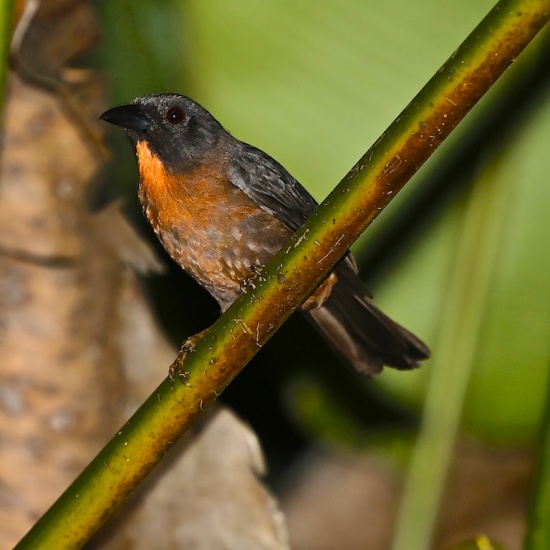
Bosque del Río Tigre Lodge, Osa Peninsula, Puntarenas Province, Costa Rica, February 2015
- Habia atrimaxillaris
Identification
19 cm (7½ in)
- Blackish head
- Salmon throat
- Salmon-orange crown patch (partially concealed)
Females are slightly duller
Distribution
South America: Endemic to the Pacific lowlands of south-western Costa Rica (Golfo Dulce)
Taxonomy
This is a monotypic species[1].
Habitat
Dense lowland forests, moist shrubland and streamside woodland.
Behaviour
Diet
The diet consists of insects, fruits and some berries.
Breeding
The nest is cup-shaped and made from leaves and plant material. The clutch consists of 2 eggs, the young fledging after 10-12 days.
Gallery
Click on photo for larger image
Photo by FlushUnderFoot
Osa Peninsula, Costa Rica, February 2012
References
- Clements, J. F., T. S. Schulenberg, M. J. Iliff, D. Roberson, T. A. Fredericks, B. L. Sullivan, and C. L. Wood. 2014. The eBird/Clements checklist of birds of the world: Version 6.9., with updates to August 2014. Downloaded from http://www.birds.cornell.edu/clementschecklist/download/
- Handbook of the Birds of the World Alive (retrieved June 2015)
- Wikipedia
- BirdLife International
Recommended Citation
- BirdForum Opus contributors. (2025) Black-cheeked Ant Tanager. In: BirdForum, the forum for wild birds and birding. Retrieved 13 May 2025 from https://www.birdforum.net/opus/Black-cheeked_Ant_Tanager
External Links
Search the Gallery using the scientific name:
Search the Gallery Using the common name:
GSearch checked for 2020 platform.





